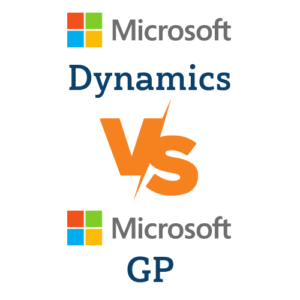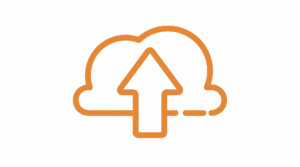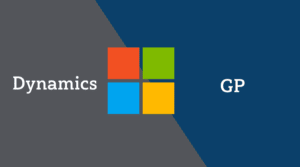Difference Between Dynamics GP and Dynamics 365
Learn the key differences between GP and Dynamics 365, explore the benefits of D365, GP migration hurdles, and best practices for success
Table of Content
If you’re a Dynamics GP user, perhaps you’ve heard rumors that Microsoft will drop support by 2025.
While Microsoft has yet to confirm an official end-of-life plan for Great Plains, its eventual retirement is an inevitability. And, as it stands, GP users don’t have access to the latest features & enhancements already available in Dynamics 365 Business Central.
While we don’t know for sure when Microsoft will finally pull the plug, it’s a good idea to start making moves toward migration.
Now, unlike Dynamics NAV or AX, Dynamics GP is an ERP solution that focuses primarily on accounting. Which means, moving to Dynamics 365 will also involve replacing or integrating the other ERP solutions in your stack to create a more cohesive system.
Below, we’ll explain the key differences between GP and Dynamics 365, before digging into benefits, migration hurdles, and best practices for success.

Dynamics GP, formerly Great Plains, is a suite of accounting and ERP software for small and medium-sized businesses purchased by Microsoft in 2000.
The platform provides SMBs with access to more robust financial tools than you’d find in other “entry-level” accounting systems. Inside, you’ll find tools that support manufacturing processes, allow users to manage several companies and business units, and an integrated payroll functionality.
GP isn’t as adaptable as other Dynamics solutions—but this is by design. GP comes with some baked-in guardrails that enable faster implementation. It also integrates with ISV solutions and 3rd-party data sources, making it easy to sync the accounting stack with the rest of the business.
GP users can perform all the same accounting functions in D365, with some major upgrades. But, they’ll also unlock new features and functionalities that extend beyond accounting. D365 offers way more business processes right out of the box. That means you’ll get a more cohesive ERP system than GP, which relies heavily on 3rd-party integrations.
Dynamics BC comes with a whole library of out-of-the-box reports and integrates with Power BI. Instead of manually creating and emailing spreadsheets, D365 users can instantly generate reports.
What’s more, D365’s automatic updates mean you’re always up to date with changing standards and new innovations. No need to worry about workarounds and security patches.

It’s important to emphasize that the real difference between Dynamics 365 and Dynamics GP is that they’re two distinct products.
While Microsoft does offer tools that can help you bring existing data and business processes into the new system, “migrating” from GP to D365 isn’t a true upgrade.
GP represents one of many ERP tools in your stack. So, what you’re really looking at is a two part process. First you’re consolidating all relevant data and processes. Then from there, you’re migrating what you want to keep to the new system.
Here’s a look at some of the challenges you’ll want to prepare for:
Moving to the cloud has a significant impact on how employees work.
Sam Miller says, “customers must understand the tremendous differences between these two systems. It’s a new system that requires you to rethink the way you do things. You can’t just say ‘give me all these reports.’ It’s a journey that shouldn’t be underestimated.”
Nick DiAngelo: “Sometimes customers have a hard time with the differences in account structures. GP has strings with the main account and sub accounts in one column whereas BC has a main account and dimensions that are separate columns.”
Nick says he’s also seen clients struggle with Business Central because it’s designed for a larger user base. “You get clients moving from GP, which has a small user base to BC, which serves a wide range of business types–and often, they don’t like all the different screens they need to go to to perform tasks.”
This problem can be addressed by removing the features you don’t need and optimizing the ones with the greatest impact on the business. But, it takes a lot of planning and documentation to get this right.
“Clients must have a solid grasp of their needs and a deep understanding of business processes. That’s a huge undertaking. You’ll need to map out all raw data (inputs), their required outputs, what features/applications are involved, and which internal and external customers they serve.” – Anthony Dossier, Senior Functional Consultant
One of the main benefits of migrating to BC is you’re relying less on ISV solutions and 3rd-party vendors to run simple tasks like cutting a check. At the same time, consolidating all these data sources represents one of the biggest challenges organizations face during the migration process.
Solutions Architect, Jeff Smith says, “ with GP, reliance on 3rd-party applications can make migration difficult. In part, because you’ll need to learn the language that different vendors and apps use to describe processes and organize data.”
That means, you’re adding this extra layer of difficulty to the process. First, you’re decoding the various nuances and terminology from each system to ID gaps and overlapping functionality. Then, you’re making that decision about which processes to migrate, replace, or improve.
Beyond the logistical challenges of tracking down processes from disparate systems, clients also struggle to evaluate potential solutions.
Senior Client Sales Manager, Lawrence Edwards says, “some of the biggest challenges clients face comes from evaluating existing customizations to determine whether they’re the best solution for the long-term.”
He also says businesses struggle to make plans for 3rd-party integrations and migrate data from GP.

With GP, you’re pulling in data from many platforms. This could make mapping and migrating data much harder than starting from an all-in-one solution like NAV or AX.
A few tools you can use to migrate data:
Again, replacing GP with Dynamics BC is not a true upgrade. But–Microsoft does provide a data migration wizard to help users (coming from GP versions 2015 or later) get some of their data into the new system.
The wizard only migrates the financial data you need to start using the new system–specifically master records and open transactions.
That way, you can start using BC for critical processes while you complete the rest of the implementation.
That data includes:
The migration tool includes a diagnostics run for verifying data before deploying to the new system. It also allows you to “uncheck” items you don’t want to migrate but it’s better for handling one-off records that slipped through the cracks.
You’ll want to dig into each of these categories and clean up old or inaccurate data before you start the migration process. For example, you might delete raw materials you no longer use from your inventory records. You might also clean up customer records and make sure your General Ledger is set up correctly.
For historical data (SOs, POs, bank transactions, etc.), you could connect your Dynamics GP system to a reporting tool using a connector, to bring insights into BC–though you’ll eventually want to migrate that data into the new system directly.
Replication is an intelligent cloud sync tool that allows you to sync master data from your on-prem solution to the new, cloud-based Business Central tenant.
This process does enable you to store data from the on-prem platform in the cloud, but that data is read-only in BC. That means that while you can access GP insights from the new system, all data is entered via GP.
You’ll need to manually replicate GP data or schedule syncs in advance to receive updated information–adding an extra step to the reporting process and potentially slow down your ability to take action on time-sensitive data points.
Ultimately, it’s best to look at replication as an interim solution as you work through the rest of the migration process.
There’s also a tool called RapidStart, which allows users to extract, import, and update historical data–think completed POs, SOs,bank records–from GP to D365.
RapidStart also allows users to create journal entries in batches and configuration templates to speed up (and eventually automate) the implementation process. This tool allows you to load customer data, chart of accounts, journal entries, and companies–so you can get up and running quickly–and incorporate large data sets as you grow.

We asked our internal experts what factors separate successful GP to Dynamics 365 migrations from those that fail. As you can see, responses were primarily about culture and collaboration–characteristics that become critical in complex migrations with a ton of moving pieces.
Dynamics 365 is designed to help businesses quickly adapt business processes and tactics to reach key business objectives.
You can add modules, ISV solutions, change up the metrics in your financial reports, automate back-office processes, etc–putting the rest of the system at risk.
Adaptability is about being prepared to take advantage of new tools and technologies as things change. But it’s more about culture than technology, and you’ll need to put in the work of shifting your organization’s collective mindset to ensure your implementation leads to sustained, long-term gains.
It comes from a strong culture of data literacy, knowing how to operationalize data and move fast. It’s also about establishing strong governance policies and controls for keeping data organized, compliant, and easy to find.
Adaptability is also about preparation. She recommends that clients “create testing scenarios and plans for how they’ll take action in specific situations. Focus on 80/20 rules–scenarios that reflect what happens most of the time–not one-off exceptions.” – Carrie Gabris, Consulting Manager, BC Enterprise
Long-term, you’ll want to monitor system performance–is it continuing to deliver the desired outcome? Are there opportunities to improve? New capabilities you can use? Ultimately, you’ll need to get away from rigid solutions and processes to make the most out of this flexible new system.
Top-down commitment, along with support throughout the organization is essential for staying aligned when multiple groups with competing goals are working together.
“Clients tend to be most successful when they have a dedicated set of subject matter experts (SMEs) embedded in each internal department. You’ll want to make sure they also have supportive staff members to assist with daily activities, while SMEs focus on the big-picture implementation.” – Anthony Dossier, Senior Functional Consultant
Ideally, clients also have a dedicated project manager or champion who can act as the main point of contact–essentially, leading and ‘quarterbacking’ efforts internally. This person should have a solid grasp of finance and operations–and understand how these areas impact the rest of the business.
Lawrence Edwards: “Get alignment across your teams for the migration. There are many opportunities for improvement in this migration and organizations who embrace the change will be positioned to take best advantage of the technology.”
Enlisting some help from an experienced implementation partner goes a long way in making sure your D365 migration delivers the desired outcome, as efficiently as possible.
When you bring in outside experts to support these high-level projects, it’s important to understand what that entails.
Sam Miller says, “success really boils down to the leadership inside your company and the project teams on both sides. The better you’re able to work with your implementation partner as a true partner, rather than a vendor, the better the outcome.”
What that means is, your partner can’t do all of the work for you.
Internally, you’ll want to:
You don’t have to have all of the answers, but you should be able to communicate your goals and what kinds of changes you’d like to see come from this implementation.
All apps, processes, and workflows must connect to a specific goal and support users in their work. The more details you can provide to your partner, the more likely they are to find solutions that address those goals.
“Clients who co-own the project with their partner are the highest performers. Taking responsibility for the solution as your own and working with a great partner to accelerate the process is essential.” – Lawrence Edwards, Senior Client Sales Manager

In the end, the key thing to keep in mind is that replacing Dynamics GP with Dynamics 365 only covers a fraction of your business processes. As such, it’s important to look beyond the new functionality D365 brings to your financial tools.
Migrating from GP to Dynamics 365 is a complex process–one that involves weaving together many disparate systems. Velosio can help you navigate this process and take advantage of all BC has to offer–beyond the enhanced financials.
Talk to us about how Velosio can help you realize business value faster with end-to-end solutions and cloud services.